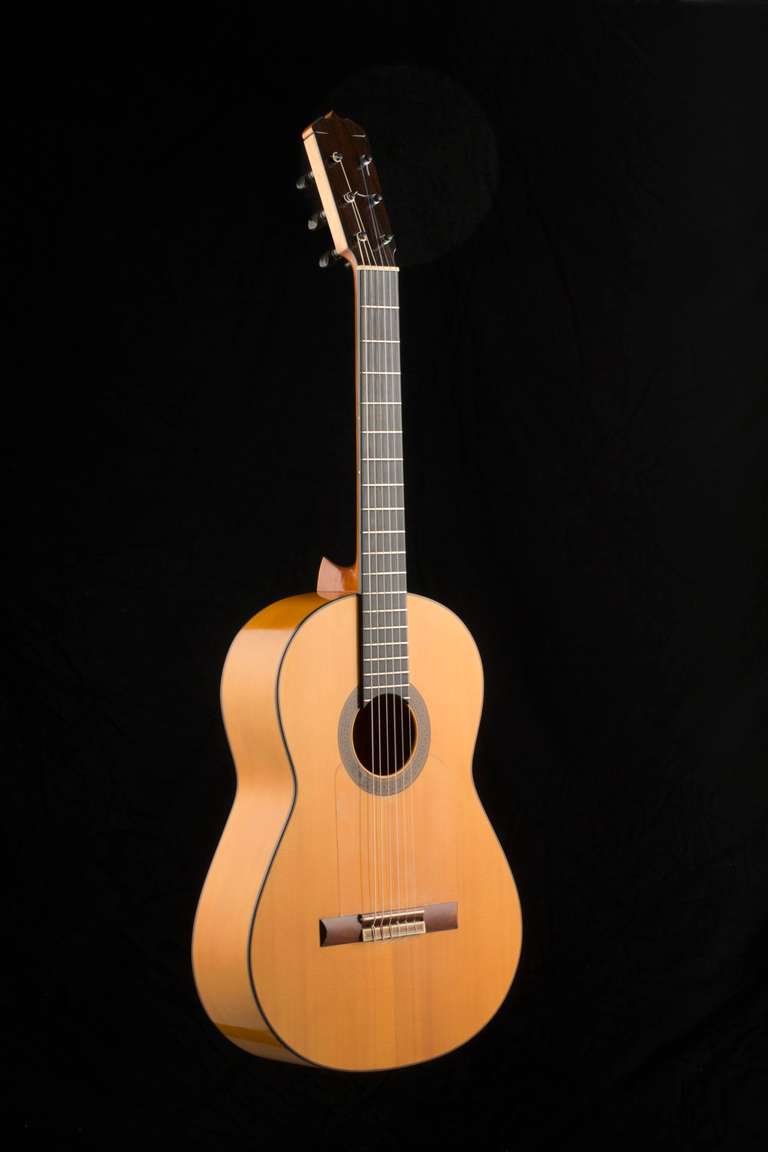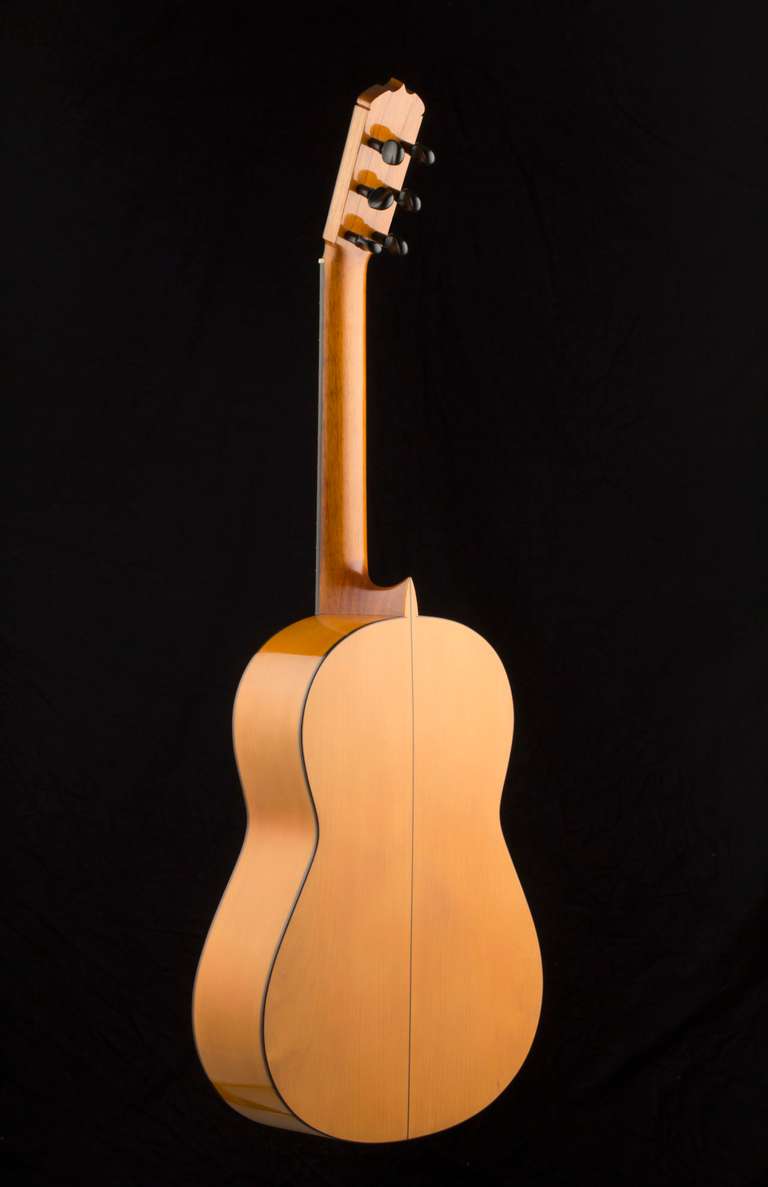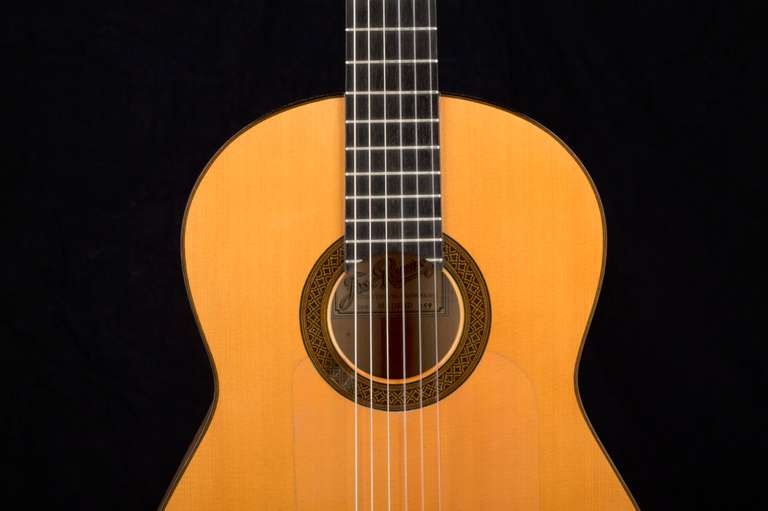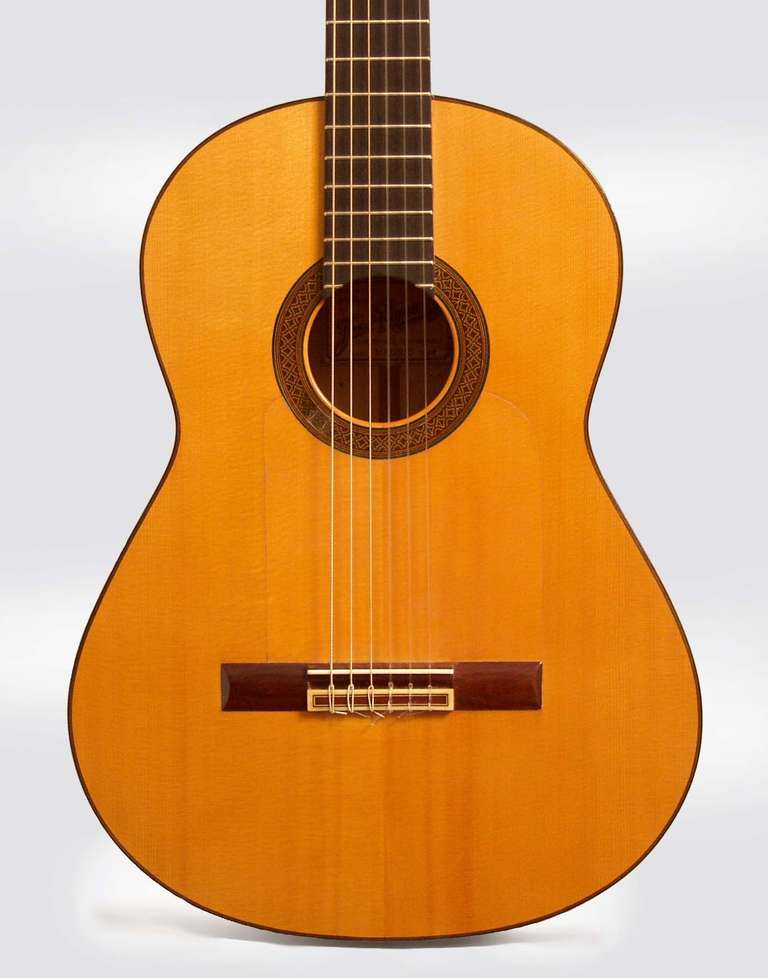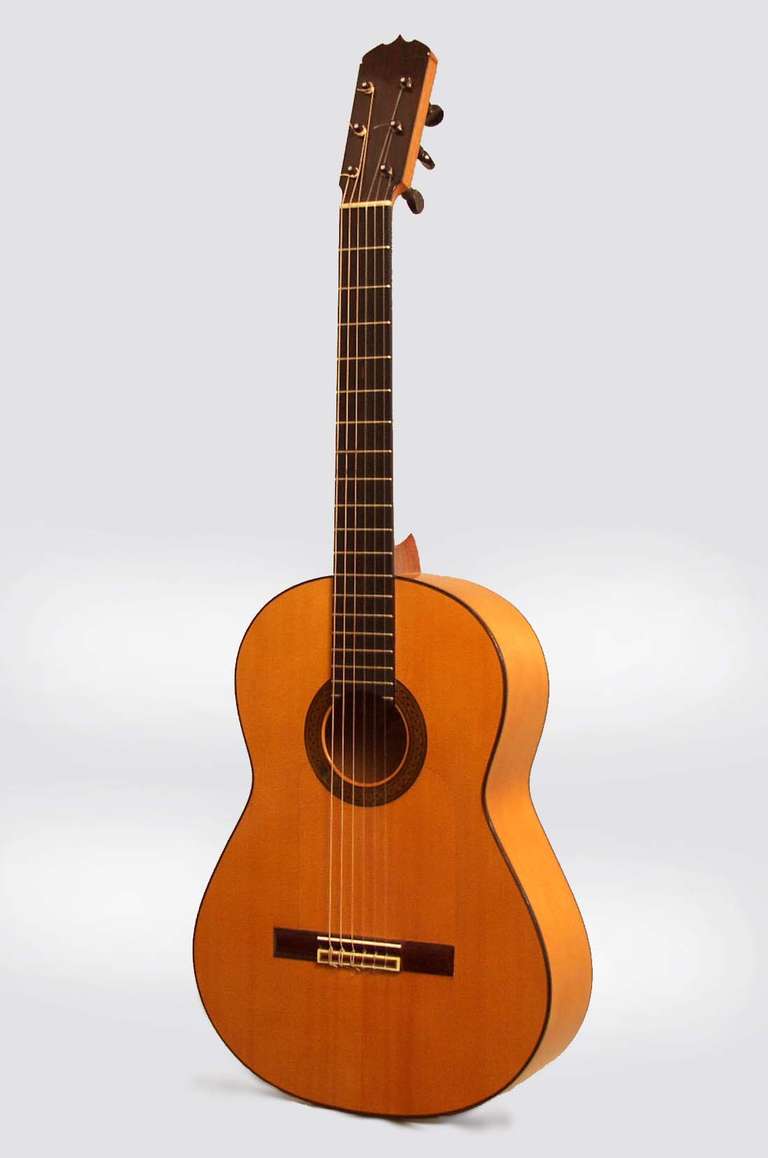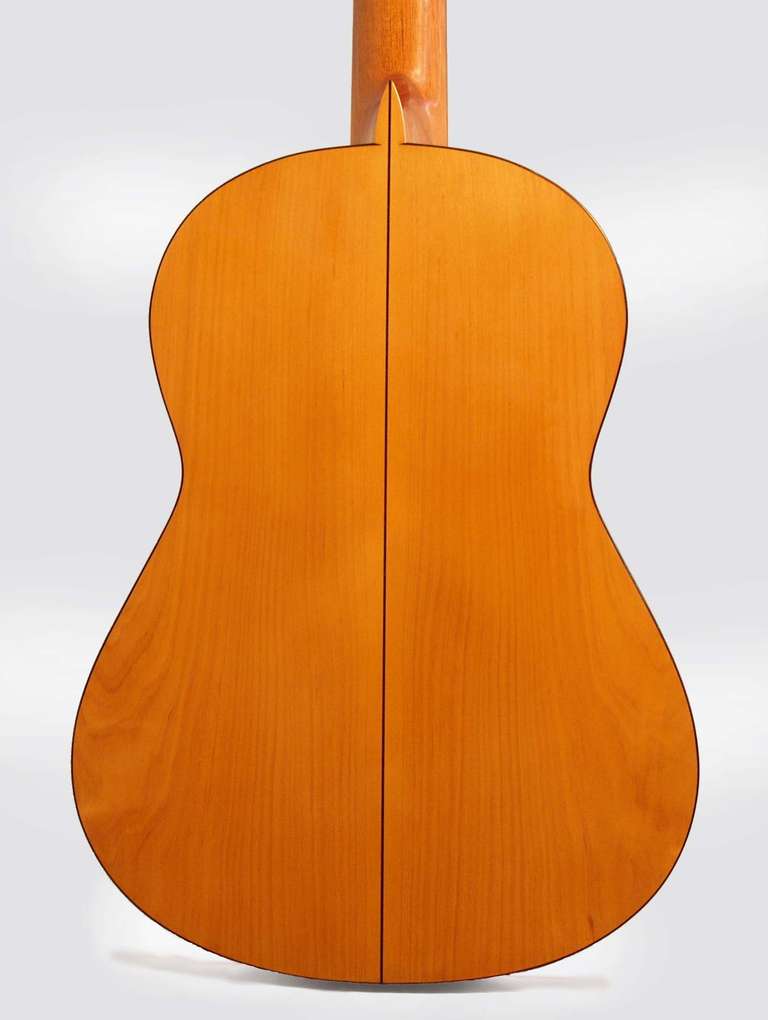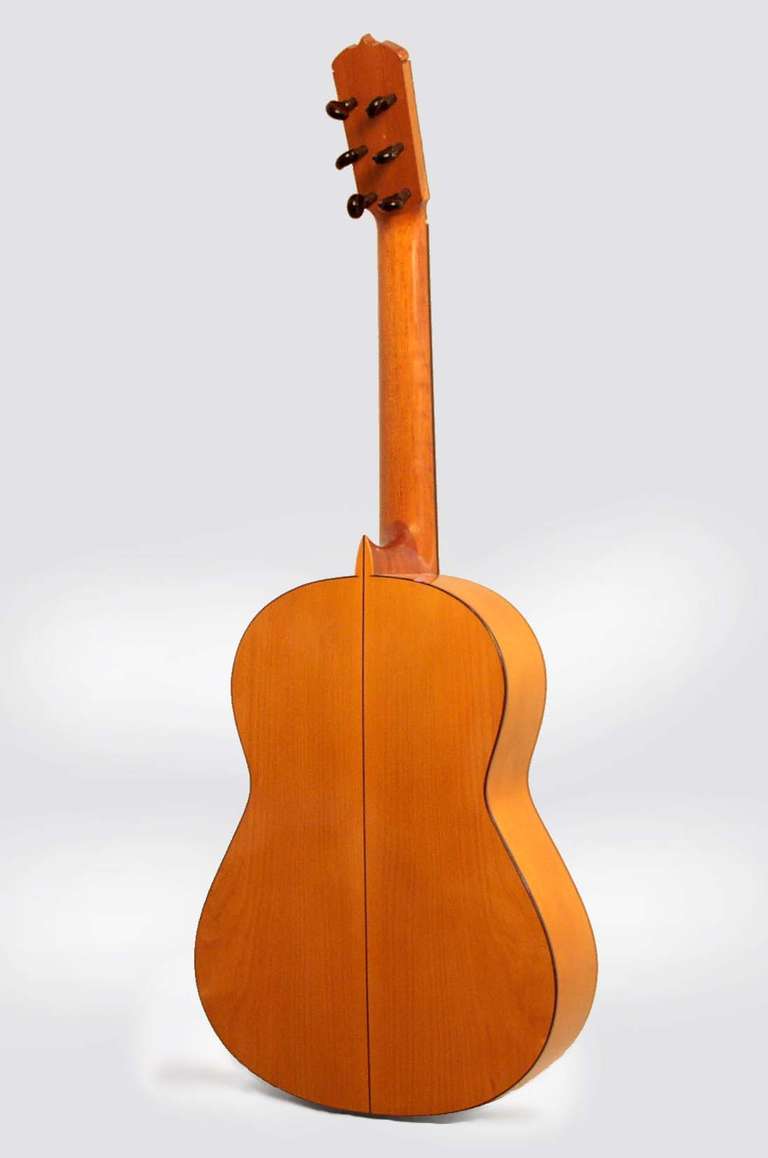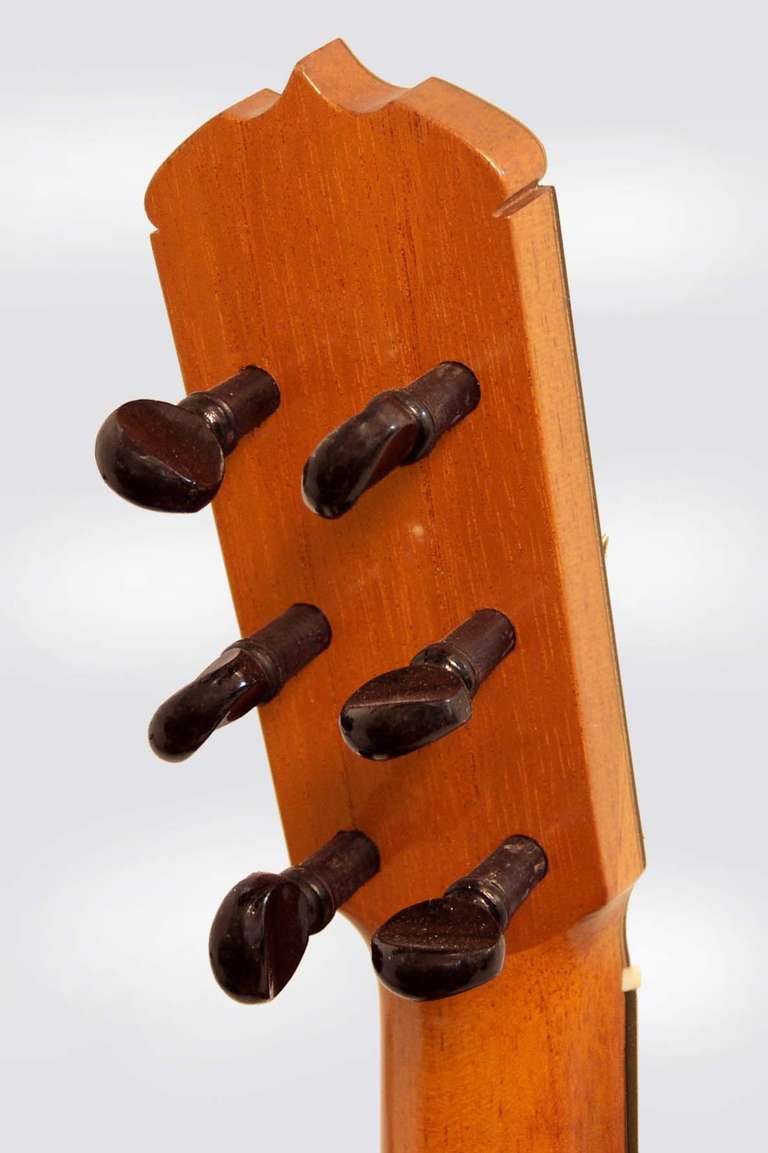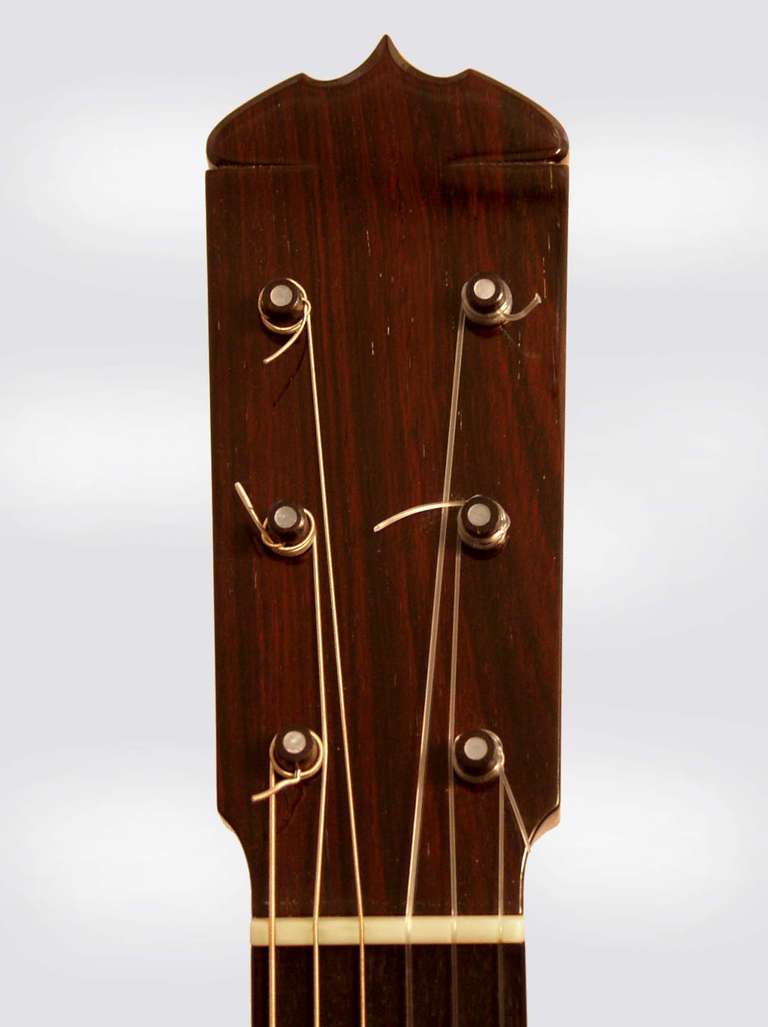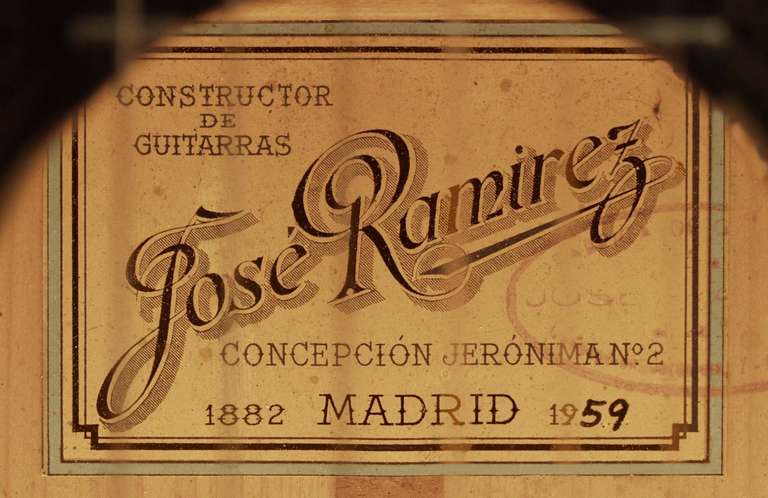Jose Ramirez 1959
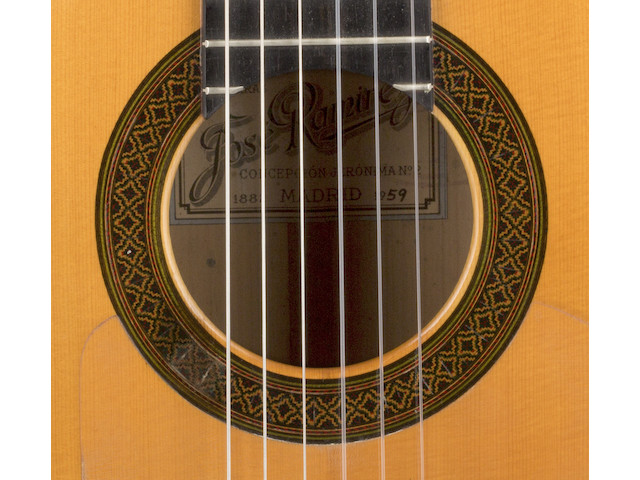
The guitar maker
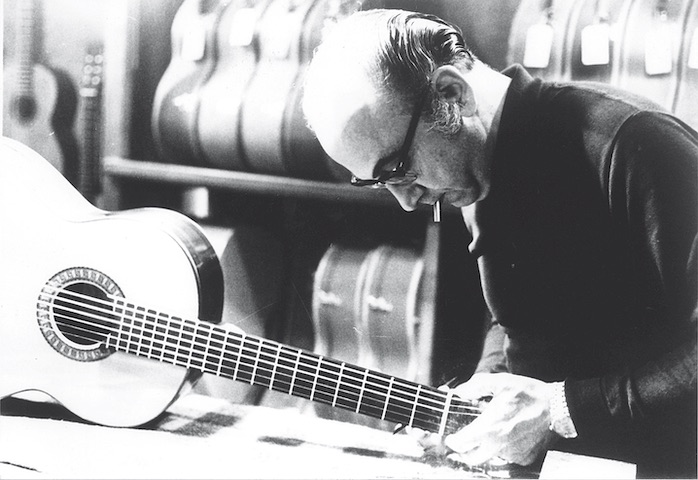
José Ramírez III (1922 - 1995) was born in Buenos Aires, Argentina, in 1922. His father José II had left Spain for a brief tour of South America after the turn of the century and ended up staying for nearly 20 years. In I923, on the news of the death of his own father, José II moved the family back to Madrid, and it was at this time that he took over his late father’s guitar workshop. At the age of 18, José III began working as an apprentice and within a few years was building guitars and experimenting on his own. In I957, he took over the duties as ‘maestro’ (master) of the Ramírez workshop, which by now had spanned three generations, and he continued to develop what would become the Ramírez concert guitar that we know today.
Probably his most enduring contribution was his role as a teacher and as a developer of talent. From the 1960s to the 1990s, the José Ramírez workshop had assembled and trained many of the most talented guitarreros of José III’s generation, many of whom continue to work on their own with great individual success. This collection of greatness under one roof has only been approached by that of Manuel Ramírez (José III’s great-uncle) or his grandfather, José Ramírez I, whose workshops collectively included the likes of Santos Hernández, Enrique Garcia, Domingo Esteso, Emilio Pasqual Viudes, Modesto Borreguero, Julian Goméz Ramírez and many others.
José III’s roster, however, is still unmatched when you consider the number of great luthiers who began their careers there. They include Paulino Bernabé, Manuel Contreras, Mariano Tezanos, Enrique Borreguero Marcos, Pedro Contreras Valbuena, Manuel González Contreras, Miguel Malo Martínez and so on.
José III’s guitars became the standard for musicians worldwide because he was able to produce roughly 20,000 concert instruments during the course of his lifetime, which was somewhere between 20 and 40 times that of his average competitor. Not only did José III succeed in seducing the majority of concert artists of his day to play Ramírez guitars, but he provided instruments to their students, as well as to several generations of the amateurs who followed them.
The second reason for Ramírez pre-eminence as master guitar maker was his capacity for innovation. He experimented with the use of western red cedar from North America as a tonewood for the soundboard, and eventually popularized it as the alternative to northern European spruce, which had been the standard for virtually all stringed instruments including pianos, violins and lutes.
Another remarkable and central innovation occurred in the 1960s when, most probably at the request or influence of Andrés Segovia, José III began to introduce the long string length of 664 mm in his guitars. This gave the instrument more power to project in a large concert hall and also accommodated the huge hands of the maestro. Although it has in recent years fallen out of favor, this increased string length became the standard among guitar makers and guitarists throughout the 1960s and 1970s, and is still preferred today by many performers who need to fill large concert halls, or those who are lucky enough to find themselves playing with an orchestra.
All of José III’s innovations led to his building of one particular model, the “1A Tradicional” we know today, amongst improvements to other models. Many world-renowned players were immediately drawn to this new guitar, among them Andrés Segovia, who began his career with a guitar made by Manuel Ramírez.
Finally, although there has been much said about José III over the years, it cannot be denied that the guitar which he designed in the early 1960s still stands as the world standard of the concert classical guitar, a standard by which all other guitars are measured and will be measured in years to come.
From The Classical Guitar: A Complete History, published by Balafon Books, 1997
Description
This guitar was brought to Belgium from the collection of Rose Augustin from New York.
This is an exceptionally well preserved Ramirez Flamenco guitar dated to 1959.
The top is spruce and extremely lightly braced with five shallow fan struts.
The sound is both powerful and penetrating.
The foot and the inside of the guitar is stamped internally with the builders’s initials “AM” most likely Antonio Martinez Ortega.
Martínez is the same maker who built for Andrés Segovia and Christopher Parkening.
Condition
No cracks and no repairs ever done.
There has been a very light French re-polising to the body.
| Origin: | Spain Madrid |
| Scale: | 660 |
| Top: | Spruce |
| Back & Sides: | Cypress |
| Tuners: | PEGHEDS™ |
| Overall length: | 984 |
| Lower bout: | 368 |
| Neck: | Spanish cedar |
| Side and end block: | 100 |
| Neck width: | 51 |

